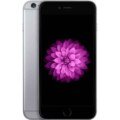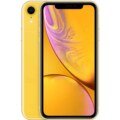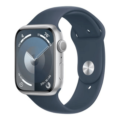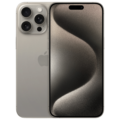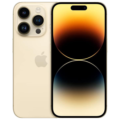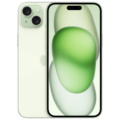- Home
- Apple Devices
- apple-watch
- Apple Watch Series 4 full specifications
Apple Watch Series 4 full specifications
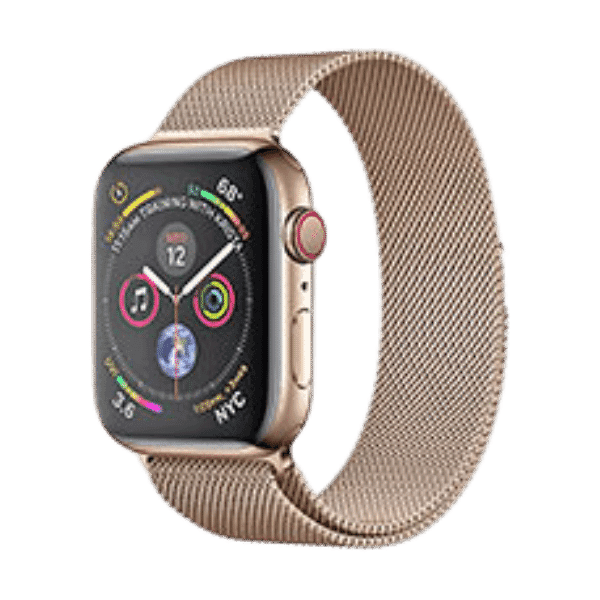
SPECIFICATIONS
General
| Status | Available |
| Announced |
2018, September |
| Released | 30 September, 2025 |
| Model |
A1975, A1976, A2007, A2008 |
| Price Apple iPhone Price in USA, UK, Canada, Australia, India, Pakistan, China, Japan and Europe |
EUR 700 USD 766 |
Network
| Technology |
GSM / HSPA / LTE |
| 2G Network | GSM 850 / 900 / 1800 / 1900 |
| 3G Network |
HSDPA 850 / 900 / 2100 / 800 - Europe, Australia HSDPA 850 / 1700(AWS) / 1900 / 800 - USA, LATAM, Canada HSDPA 2100 - China |
| 4G Network |
1, 3, 5, 7, 8, 18, 19, 20, 26 - Europe, Australia 2, 4, 5, 12, 13, 17, 18, 19, 25, 26, 41 - USA, LATAM, Canada 1, 3, 39, 40, 41 - China |
| Speed | HSPA, LTE |
| GPRS GPRS (General Packet Radio Service) is a packet oriented mobile data service on the 2G and 3G cellular communication system's global system for mobile communications (GSM), Generally, GPRS is used for the purpose of wireless data transfer, such as sharing pictures and videos or browsing the Internet via a mobile phone connection. | |
| EDGE EDGE (Enhanced Data GSM Environment) is a wireless network technology generally considered the next step in the 2G network offers data transfer rates up to four times faster than ordinary GSM networks, Generally, EDGE is used for the purpose of wireless data transfer, such as sharing pictures and videos or browsing the Internet via a mobile phone connection. |
Body
| Dimensions | 44 x 38 x 10.7 mm (1.73 x 1.50 x 0.42 in) |
| Weight | 48 g (1.69 oz) |
| Colors |
Space Black, Silver, Gold |
| SIM SIM (Subscriber Identity Module) is a small card that contains mobile network subscriber's account information. This allows the phone using the card to attach to a mobile network. The SIM card is most commonly associated with GSM and UMTS mobile networks. Moving a SIM card from one phone to another allows a subscriber to switch mobile phones without having to contact their mobile network carrier. SIM cards can also be used by a phone to store limited amounts of data, such as phone numbers and text messages. | eSIM |
| Build | Glass front (Sapphire crystal), ceramic/sapphire crystal back, stainless steel frame |
| Water Resistant | 50m water resistant |
Display
| Display Type Display Technology => A number of display technologies and types used in mobile phones => TFT (Thin Film Transistor), IPS (In-Place Switching), OLED (Organic Light Emitting Diode), AMOLED (Active-Matrix Organic Light-Emitting Diode), Super AMOLED (an even advanced version of AMOLED), Resistive Touchscreen (Resistive touchscreens contain two layer of conductive material with a very small gap between them which acts as a resistance), Capacitive Touchsceen (Capacitive touchscreen technology consists of a layer of glass coated with a transparent conductor) | Retina LTPO OLED, 1000 nits (peak) |
| Size | 1.78 inches |
| Resolution | 448 x 368 pixels |
| Pixel Density Pixel Density (PPI) is refers to the concentration of pixels on a particular display, measured in pixels per inch (ppi). Pixel density is calculated by dividing the diagonal pixel resolution of a display by its diagonal size, higher pixel density better display quality. | (~326 ppi density) |
| Touch Screen | 3D |
| Display Protection Display Protection => Gorilla Glass is a special alkali-aluminosilicate glass shield with exceptional damage resistance that helps protect mobile displays from scratches, drops, and bumps of everyday use, It is always better to go for a smartphone with Gorilla Glass for that added protection and peace of mind. | Sapphire crystal glass |
| Multitouch | |
| Features |
3D Touch display |
Camera
| Primary Camera is able to capture photographs and usually videos, The most important characteristics of a camera are the resolution (measured in megapixels), lens focus type (fixed or automatic), higher megapixel cameras are known to capture higher quality photos, but not always a good measurement of the photos quality. | NO |
Software
| Operating System OS => Every computer system run on a base software called Operating System (OS). Operating System controls all basic operations of the computer (such as smartphone, PDAs, tablet computers and other handheld devices). The Operating System allows the user to install and run third party applications (apps), apps are used to add new functionality to the device. | watchOS 5.0, upgradable to watchOS 10.3.1 |
| Browser (Default) | Safari |
Hardware
| Chipset Chipset is a group of integrated circuits designed to perform one or a more dedicated functions, often with real time computing constraints, Popular smartphones are equipped with more advanced embedded chipsets that can do many different tasks depending on their programming. | Apple S4 |
| CPU CPU (Central Processing Unit) mostly known as processors, CPU processes instructions in order to carry out certain functions that make your device operate properly. Processors are often described as the brain of computers, smartphones and tablets, Smartphones and tablets rely on processors to carry out their every task, Processors are an incredibly important factor in selecting any type of computing device, including your smartphone. | Dual-core |
| GPU GPU (Graphics Processing Unit) is a single-chip processor designed to rapidly manipulate and alter memory to accelerate the creation of images in a frame buffer intended for output to a display, This includes things such as lighting effects, object transformations, and 3D motion. | PowerVR |
| RAM (Memory) RAM (Random Access Memory) is a type of computer memory that can be accessed randomly, any byte of memory can be accessed without touching the preceding bytes that allows information to be stored and accessed quickly from random locations. RAM is the most common type of memory found in computer systems, smartphones, tablets and other electronic devices. | 1 GB |
| Internal Storage Internal Storage is a data storage space (flash memory) mostly used in smartphones, tablets and other electronic devices where operating system, apps, music, photos, videos, files and other user data Is stored. | 16GB |
| Card Slot Memory Card Slot is a special slot for inserting a memory card. Memory cards allow you to expand the phone's built-in memory, A memory card (sometimes called a flash memory card or a storage card) is a small storage medium used to store data such as text, pictures, audio, and video, for use on small, portable or remote computing devices such as mobile phones, mp3 players, digital cameras. | No |
| Sensors Sensors are electronic components that detects and responds to some type of input from the physical environment. The specific input could be light, heat, motion, moisture, pressure and location, The output is generally a signal that is converted to use in computing systems, a location sensor, such as a GPS receiver is able to detect current location of your electronic device. |
Accelerometer, gyro, heart rate, barometer Natural language commands and dictation (talking mode) |
Battery
| Battery Type Battery Type => Cell phones run on various kinds of batteries depending on the manufacturer, phone size or shape and features. There are basically four types of cell phone batteries => Lithium Polymer, Lithium Ion, Nickel Metal Hydride and Nickel Cadmium. | Li-Po |
| Capacity Battery Capacity is a measure (typically in Amp-hr) of the charge stored by the battery, and is determined by the mass of active material contained in the battery. The battery capacity represents the maximum amount of energy that can be extracted from the battery under certain conditions. | 292 mAh (1.12 Wh) |
| Placement | Non-removable |
| Wireless Charging Wireless Charging (Inductive Charging) uses an electromagnetic field to transfer energy between two objects. This is usually done with a charging station. Energy is sent through an inductive coupling to an electrical device, which can then use that energy to charge batteries or run the device. | Yes |
Media
| Loudspeaker | Yes |
| 3.5mm Jack | |
| FM Radio | No |
Connectivity
| Bluetooth Bluetooth is a wireless communications technology for exchanging data between mobile phones, headsets, computers and other network devices over short distances without wires, Bluetooth technology was primarily designed to support simple wireless networking of personal consumer devices. | 5.0, A2DP, LE |
| Infrared Infrared connectivity is an old wireless technology used to connect two electronic devices. It uses a beam of infrared light to transmit information and so requires direct line of sight and operates only at close range. | |
| Wi-fi Wi-Fi is a popular wireless networking technology using radio waves to provide high-speed network connections that allows devices to communicate without cords or cables, Wi-Fi is increasingly becoming the preferred mode of internet connectivity all over the world. | 802.11 b/g/n |
| Wi-fi Hotspot | |
| USB | No |
| GPS GPS The Global Positioning System is a satellite-based radio navigation system, GPS permits users to determine their position, velocity and the time 24 hours a day, in all weather, anywhere in the world, In order to locate your position, your device or GPS receiver must have a clear view of the sky. | GPS, GLONASS, GALILEO, QZSS |
| NFC NFC (Near field communication) is a set of standards for smartphones and similar devices to establish peer-to-peer radio communications with each other by touching them together or bringing them into proximity, usually no more than a few inches. |
MISC
Description
The Apple Watch Series 4, released in September 2018, marked a major leap forward in smartwatch technology. With its elegant design, advanced health features, and improved performance, this model became an iconic addition to Apple’s wearable lineup. In this review, we’ll explore the full specifications and key features of the Apple Watch Series 4, covering everything from its design to its performance capabilities.
Table of Contents
Sleek Design and Build Quality

The Apple Watch Series 4 showcased a modern design with a larger display and slimmer bezels. Available in two sizes—40mm and 44mm—the watch featured a resolution of 324 x 394 pixels for the 40mm model and 368 x 448 pixels for the 44mm model. The Retina LTPO OLED display, protected by sapphire crystal glass, delivered vibrant colors and sharp details with a peak brightness of 1,000 nits, ensuring excellent visibility even in bright sunlight.
The build quality was top-notch, with a stainless-steel frame, a sapphire crystal back, and a ceramic finish. Weighing just 48 grams, the watch was lightweight and comfortable for all-day wear. Its rounded corners and sleek design gave it a premium aesthetic appeal.
Performance and Hardware
Powered by the Apple S4 dual-core processor, the Series 4 delivered twice the performance of its predecessor, the Series 3. The watch featured 1GB of RAM and 16GB of internal storage, providing ample space for apps, music, and other data. The PowerVR GPU ensured smooth graphics performance, enhancing the overall user experience.
The device ran on watchOS 5.0 out of the box and was upgradable to watchOS 10.6.1, ensuring access to the latest software features and improvements. The Series 4 also included the W3 wireless chip for seamless Bluetooth 5.0 and Wi-Fi connectivity.
Advanced Health and Fitness Features

One of the best features of the Apple Watch Series 4 was its health and fitness capabilities. The watch introduced an ECG (electrocardiogram) feature, allowing users to monitor their heart health directly from their wrist. While the ECG app’s availability depended on regional regulations, the hardware for this feature was present in all models.
The Series 4 also included a second-generation optical heart rate sensor, accelerometer, and gyroscope. These sensors enabled features like fall detection, which could automatically alert emergency services in case of a hard fall. Additionally, the watch was equipped with a barometer for tracking elevation, making it ideal for outdoor activities like hiking.
Connectivity and Network Options
The Apple Watch Series 4 offered both GPS and GPS + Cellular models, with the latter supporting LTE connectivity through an embedded eSIM. This allowed users to make calls, send texts, and stream music directly from their watch without needing to carry their iPhones. Positioning technologies such as GPS, GLONASS, Galileo, and QZSS ensured accurate location tracking.
The watch also supported NFC for contactless payments via Apple Pay, enhancing its utility for everyday tasks.
Battery Life and Charging
The Series 4 was powered by a 292mAh Li-Ion battery, providing up to 18 hours of battery life on a single charge. While this battery performance was sufficient for a full day of regular use, power users engaging in extensive workouts or streaming may need to recharge sooner. The watch supported wireless charging, making it easy to power up using a compatible charging dock.
Water Resistance
The Apple Watch Series 4 was designed to be water-resistant up to 50 meters, making it suitable for swimming and other water-based activities. Users could track their swimming workouts and wear the watch in the shower without worrying about water damage.
Display and Interface

The Retina LTPO OLED display on the Series 4 was a significant improvement, offering a larger viewing area compared to previous models. The display supported a 3D Touch interface, providing haptic feedback for a more tactile experience. The Digital Crown was also upgraded with haptic feedback, adding to the watch’s responsiveness and ease of use.
Colors and Variants
The Series 4 was available in three classic colors: Space Black, Silver, and Gold. Users could choose from various bands and finishes to personalize their watch, making it a versatile accessory for both casual and formal occasions.
Software and Updates
The Apple Watch Series 4 debuted with watchOS 5.0, featuring enhanced fitness tracking, Siri Shortcuts, and Walkie-Talkie functionality. Over the years, it has remained compatible with software updates, including the latest watchOS 10.6.1, ensuring that users can enjoy the latest features and improvements.
Pricing and Availability
At launch, the Apple Watch Series 4 was priced at around 700 EUR, reflecting its premium features and build quality. While newer models have since been released, the Series 4 remains a solid choice for those seeking a reliable and feature-packed smartwatch.
Conclusion
The Apple Watch Series 4 set a new standard for smartwatches with its sleek design, advanced health features, and improved performance. Whether you’re a fitness enthusiast, a tech-savvy user, or someone looking for a stylish accessory, the Series 4 offers a compelling package that continues to hold its value years after its release.
